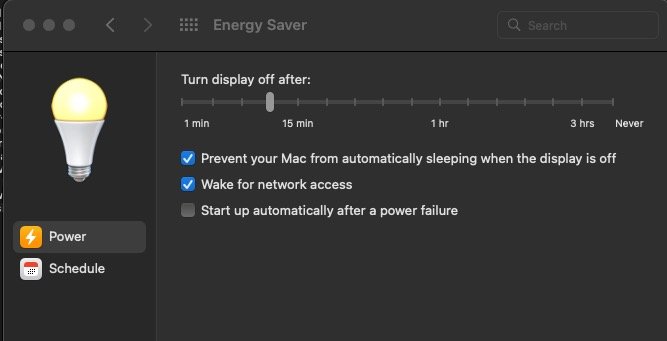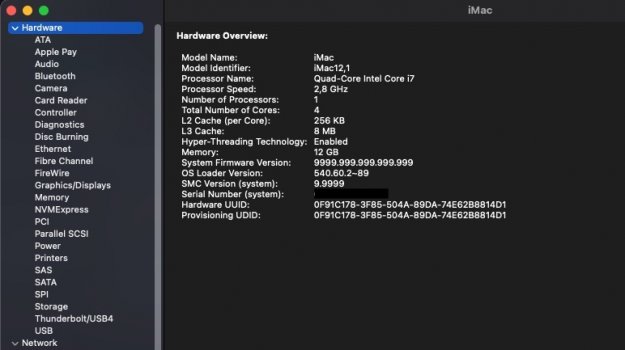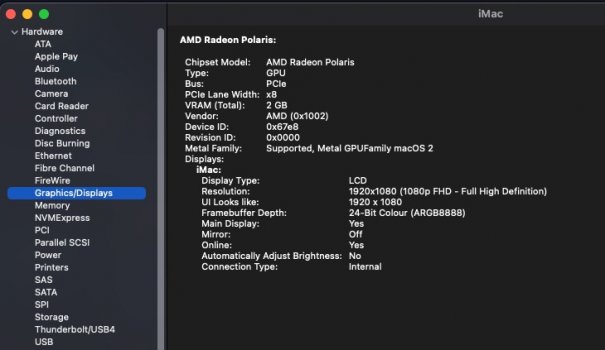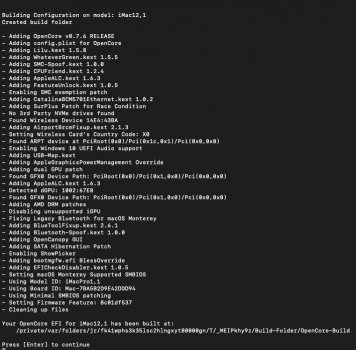My Mac I plan to upgrade:
iMac 11,1 (2009 Late) 27-inch, i7 CPU, 16GB memory.
The original Radeon HD 4850/512MB failed years ago, and was replaced with another iMac's Radeon HD 4670/256MB.
The optical drive has been replaced with an optibay enclosure and a 120GB SSD (High Sierra boots from this), the thermal sensor is stuck on this SSD. The original HDD is still in place, but not used for booting, only for data storage.
This is what I have prepared for the upgrade:
A.) Expected latest iMac 11,1 firmware version on High Sierra = 63.0.0.0.0
https://eclecticlight.co/2018/10/31/which-efi-firmware-should-your-mac-be-using-version-3/
B.) nVIDIA card: GPU reads N15P-Q1-A2, RAMs read SKhynix.
This should be a K1100M. And the appropriate ROM for this appears to be as shown next.
C.) Nick[D]vB's Quadro_Beta1.2/K1100.rom with an md5 of 30a855b2253eaf8c1cd94b2a6bfb5b16 from this post:
https://forums.macrumors.com/thread....1596614/page-152?post=28046843#post-28046843
D.) New 1TB SATA SSD
E.) OWC/MacSales HDD thermal adapter cable.
F.) DIY plastic adapter to hold the 2.5" SSD in place of the original 3.5" HDD.
G.) The_Croupier's Linux USB image from this post:
https://forums.macrumors.com/thread....1596614/page-545?post=29723850#post-29723850
USB drive formatted for GPT, FAT32. Mac_GPU_Flash.zip contents extracted to the FAT32 volume.
ROM file C.) placed on FAT32 volume under /flash/QUADRO/K1100.rom, all other .rom files removed.
H.) SHOULD, but NOT YET HAVE: Installer USB of macOS Catalina or later.
This is my action plan:
1.) Download latest High Sierra installer, do a new full install, download and install all available updates, confirm firmware is the latest (repeat all this otherwise).
2.) While on a working system, note down the wired Ethernet MAC address of the iMac, so that later when it starts without a functioning screen, I will still know what IP address it listens on.
3.) Test-boot the Linux USB drive (G.), make sure it loads, and I can connect via ssh. Then power off.
4.) Disassemble the iMac, remove the current Radeon HD card, replace it with the nVIDIA K1100M (also cut and change the wiring of the thermal sensors between the optical drive and the GPU heatsink). Reassemble the iMac, but leave all HDD/SSD disconnected.
5.) Boot the iMac from G.), expect a non-functioning screen. Access via ssh, flash the video-bios, and shut down. Disconnect the Linux USB drive.
6.) Power-on, and reset PRAM by holding Option+Command+P+R (
https://support.apple.com/en-us/HT204063).
7.) Open up the iMac again, connect back any HDD/SSD.
8.) Boot High Sierra, confirm that the new video card is working (sleep/wake, brightness control, thermal).
9.) Install H.), apply necessary modifications, etc.
Questions:
Q1.) Does this look OK? Can you spot anything I concluded incorrectly? Or did I miss something?
Q2.) At step#8 with the iMac loading High Sierra, should the screen, sleep/wake, brightness control, and thermal just work fine? Or do I need to modify something in High Sierra's S/L/E, or use some form of OpenCore to boot my iMac at that point?
This is a late 2009 iMac 27, which is told to be seriously affected by the Black Screen problem, which requires the AppleBacklightFixup or an OpenCore parameter. What is not clear to me is if it applies only when I try to boot Catalina, or if High Sierra is also affected. Also, does this only apply to nVidia cards marked with double plus (++)? Because the K1100M I have is marked with a single plus (+). Some posts refer to this with reference to Metal capable GPUs, but the K1100M is not Metal capable.
Q3.) Will temperature detection and internal fan control correctly work on the K1100M card?
Do I need to cut and change the sensor wires as indicated in step 4.), or the K1100M does not require such changes? I have difficulty understanding the source of this thermal sensor problem. As far as I can see, there is a thermo-diode glued to the GPU heatsink. Why would that stop providing the correct temperature readings when the card on the other side of that heatsink is replaced. And why would another thermo-diode of the same kind (the one glued to the optical drive) would still provide the correct temperature. So why does cutting and swapping those wires solve anything?
How do I confirm the thermal sensor/cooling fan working properly?
Q4.) What macOS version can I upgrade to in step H.)?
Is Big Sur a recommended upgrade now? There was something about Big Sur very badly wearing down the SSD drives, has that been fixed with any of its updates? Is this true to Monterey too?
Are there any other issues with Big Sur or Monterey which would suggest that I am better staying with Catalina? Particularly with my 11,1 iMac hardware and a K1100M GPU.





